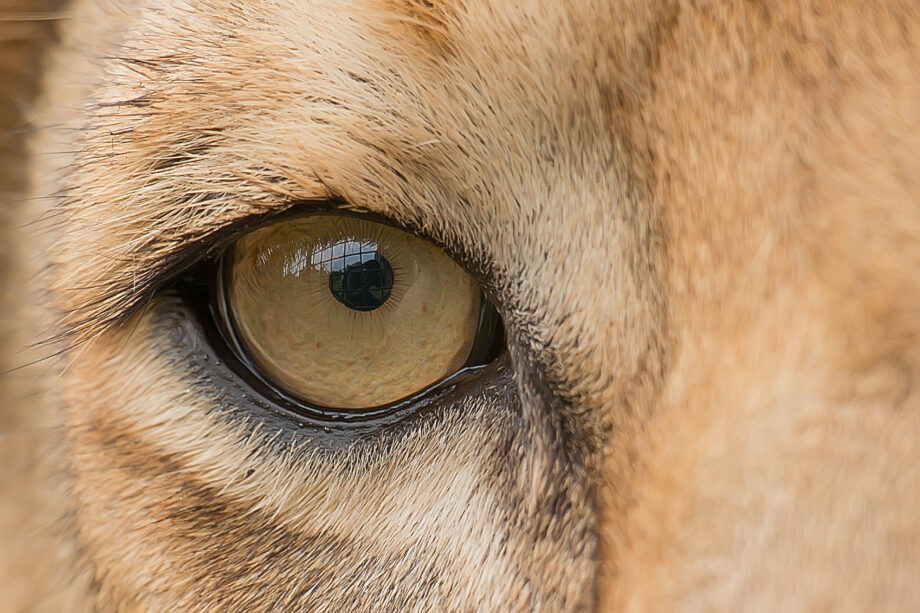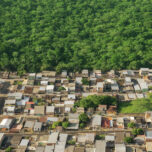December 2, 2022 — What should people who care about conservation be paying attention to?
Each year since 2009 scientists and conservationists from around the world have come together under the direction of researchers from Cambridge University to answer that question. Their goal is to “provide novel information that society and decision-makers may wish to consider in legislation, planning and actions that contribute to environmental sustainability and mitigating threats.”
This year’s group came up with 15 top issues that fall into four main categories: resource use, disturbance of organisms and habitats, technological innovations, and policy and law. Nearly half of the topics that bubbled to the top have a climate change connection.
Here are the group’s top conservation considerations for 2023:
Shell Game
Chitin, a complex molecule found in shellfish, insects and fungi, can be broken down into a treasure-trove of useful chemicals. As humans search for alternatives to plastics, new drugs, battery technologies and more, this ubiquitous molecule is seeing growing demand. The benefits to biodiversity of technologies that reduce harm to Earth’s environment are clear. But threats exist as well, in the potential for increased harvest of marine organisms. Proactive strategies such as harvesting chitin from insects fed organic trash could help maximize benefit while minimizing harm.
Conserving Lithium
Demand for lithium is skyrocketing as efforts to electrify more things expands the need for batteries. Some conservationists are concerned that the pressure will result in development of new mines with less environmental protection and tapping subprime sources with more severe implications for environmental harm. But if we use improved extraction technologies, we could protect more vulnerable ecosystems by getting more out of conventional mines and perhaps even from trash, ocean water and degraded lands.
Bio-based Batteries
Emerging technologies produce electricity by using biological molecules to break down other biological molecules, releasing electrons in the process. These technologies open the door to storing energy in batteries made of organic compounds. Such batteries could pack more power into a given space than conventional battery technologies. And they could potentially have benefits for biodiversity by reducing environmental impacts of battery production and disposal that involves toxic metals. As we dig deeper into this approach, however, other implications — positive or negative — could emerge.
Nitrogen-rich Pee
Rich in nitrogen and about as ubiquitous as a substance can get, human urine holds huge opportunity for reducing the need to produce and transport artificial fertilizer, which requires substantial energy and so contributes to climate change. What’s needed is a system for collecting and distributing it while circumventing the “ew” factor. If such systems are put into place, they not only could harvest the nutrients from urine, but also reduce the environmental impacts of including it in waste streams that go to wastewater treatment facilities — or sometimes circumvent them, polluting waterways that support native animals and plants. On the flip side, they could lead to fertilizer overuse, potentially harming ecosystems and exacerbating climate change.
DIY Fertilizer
Artificial fertilizers have contributed tremendously to alleviating hunger, but at a tremendous environmental cost: They require fossil fuels to manufacture, produce planet-warming greenhouse gases, and pollute water and air. One workaround is to plant crops that obtain nitrogen from bacteria living in or near their roots that can literally pull the substance out of thin air — a process known as “nitrogen-fixing.” Until recently, this talent has been limited to a relatively small number of crop species such as soybeans and cowpeas. But now scientists are applying modern tools of biology to expand the capabilities by genetically engineering plants to be better able to take up nitrogen and using synthetic biology to create new forms of nitrogen-fixing bacteria. As this capability grows and finds real-world application, it can reduce the adverse environmental consequences of artificial fertilizer use and so reduce their harms to wild plants and animals.
Water in the Fast Lane
Natural cycling of saltwater through the top layer of the oceans distributes nutrients needed by ocean life and helps determine weather and climate around the world. As the atmosphere, and so the ocean’s surface, warms, this circulation is accelerating and moving toward the surface, modifying the circulation patterns ocean life and coastal communities — including human ones — have evolved to thrive with. Scientists fear the changes will make oceans less able to moderate climate change and support marine ecosystems. They also could make ocean movements and temperature regimes less predictable, interfering with fisheries and ocean aquaculture and thus altering how humans affect marine organisms.
Deep Lighting
Ocean fishers who use nets or traps have long deployed lights near the surface to attract squid and other target species. Now, some are starting to apply this same approach at lower depths. The shift can be beneficial in increasing catch. But, depending on circumstances, it could also increase or decrease the likelihood nontarget species will be captured along with the desired species. Could the approach also disrupt biology or ecology by introducing light into the dark of the deep? No one knows — but from a biodiversity standpoint, it’s worth finding out.
Coastlines Meet Climate Change
Wetlands found along ocean coasts offer rich habitat for a spectrum of fish, birds and other plants and animals. They also benefit humans by sheltering land from storms, providing habitat for food species and more. Under attack by human development for decades, they are now facing another threat: a rise in ocean levels due to climate change. There is some hope that they might be partly saved by sediment buildup creating new substrate or by moving inland. However, recent studies suggest that won’t be enough to make up for the loss due to the changing climate and sea-level rise. If not, we’ll see less habitat for fish spawning, migrating bird stopovers and more as Earth’s atmosphere continues to warm.
Conserving Micro-communities
Advancing technology for identifying microbes reveals that biodiversity is not just about plants and animals: The invisible communities around us are becoming more homogeneous as humans passively or actively alter microbe mixes for purposes ranging from protecting coral reefs to improving our own health. This could affect the ability of plants, animals and biological communities to benefit from the presence of microorganisms. And prognosticators predict we’ll be more actively involved in shaping micro-communities in the future, with implications for policy as well as science.
Ailing Amphibians
Perkinsea, a protist that kills tadpoles, seems to be spreading from North America to other parts of the world. Scientists have found similar microbes in Central America, South America and Europe. As amphibian trade continues and climate change potentially makes more areas habitable for frogs, toads and their kin, researchers warn that the disease could spread farther and faster, disrupting the balance of ecosystems as these prolific insect-eaters disappear.
Conservation, Incorporated
Protecting biodiversity is drawing increased attention these days, with corporations, financial institutions and other private entities voluntarily or by government dictum beginning to identify and report on their impact on animals and plants and what they’re doing about it. As more and more hop on the accountability bandwagon, formal structures for doing so, such as the Taskforce on Nature-related Financial Disclosures, are emerging as well. Together these trends bode well for biodiversity with their potential to enhance both transparency and action.
Machine Learning Meets Conservation
Drug developers are now using machine learning to custom-design drugs to treat various ailments, as well as to test various options they design for efficacy and safety. Could a similar approach be used to reduce threats to species and ecosystems from agricultural chemicals such as herbicides and pesticides? Conservation biologists are beginning to explore the option of applying the iterative process to developing and testing manufactured substances designed for release into the environment. If successful, this approach could help reduce harm to native species such as pollinators or to ecosystems as a whole by identifying and minimizing risks before a chemical is approved for use.
Storing Energy as Heat
As anyone who has ever rubbed their hands together to warm them knows, heat is a form of energy. Scientists and engineers are hard at work using this principle to develop a new type of battery that uses heat to generate electricity. These so-called thermophotovoltaic systems could help reduce need for fossil fuels, conventional batteries, and large, centralized power plants, all of which have adverse implications for biodiversity. Current iterations are not very efficient. But the technology is getting better, and thermal batteries could eventually become economically viable enough to reduce the harms existing electricity-generating systems have on ecosystems.
Garbage Patch Paradise?
Plastic gathers in massive clusters in the ocean as trash dumped in or washed out to sea gets caught up in circulation swirls. The assumption often is that these “garbage patches” are detrimental to ocean life. But sampling shows that in reality they are rich with organisms that live at the interface of air and water. Though not natural, these communities may have some positive benefits in terms of producing food for fish, turtles and other animals. Efforts to rid the ocean of trash would do well to consider how we might protect these communities in the process.
Take That, Tree Plantations
Related Posts
Ensia shares solutions-focused stories free of charge through our online magazine and partner media. That means audiences around the world have ready access to stories that can — and do — help them shape a better future. If you value our work, please show your support today.
Yes, I'll support Ensia!



